#Arcadia Marina and the famous Pulcheria
Photo
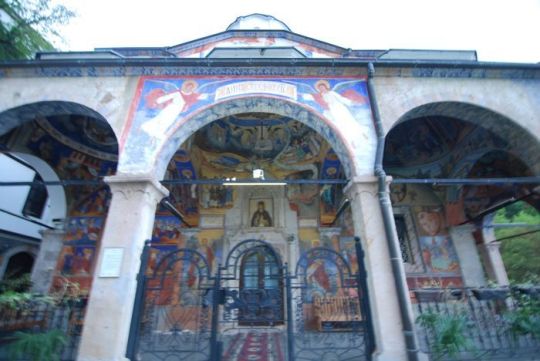
Arcadia Marina and the famous Pulcheria
He had the misfortune to quarrel with the ladies of the city, including the Empress, for their extravagance and looseness of manners. Ladies of fashion, for instance, saw nothing unbecoming in taking a swim in the public cisterns of the city. A sermon, preached while a statue of the Empress was being inaugurated close to the cathedral of S. Sophia, filled the cup of his offences. It may not be true that in the course of the discourse he compared the Empress to Herodias demanding the head of his namesake, John the Baptist.
But whatever the precise form of his words, he said enough to exasperate her to a degree that made her insist upon his final banishment, notwithstanding all the popular opposition to that step. By a strange fate, the pedestal of the column which bore the statue still remains, being now placed for safe keeping within the railing that encloses a narrow strip of ground on the northern side of the Church of S. Irene, in the first court of the Seraglio. A Latin inscription upon it records the erection of the monument in honour of Eudoxia, ever Augusta, by Simplicius, the Prefect of the city; while an inscription in Greek adds the information that the statue was of silver, the column of porphyry, and that the monument stood near the Senate-House.
Notwithstanding, however, the anxieties of the period, the improvement of the city continued to go forward. The splendour of the Court was increased by the erection of four princely mansions, placed respectively at the disposal of the Empress and her three daughters, Arcadia, Marina, and the famous Pulcheria. New Thermae were built, one of them, the Thermae Arcadianae, situated near the Sea of Marmora on the level tract below S. Irene, being a great ornament to the city.
A more abundant supply of water was secured by the construction of the large open reservoir, whose basin, 152 metres square, now occupied by vegetable gardens and houses, is still seen to the south-west of the Mosque of Sultan Selim, above the quarter of the Phanar. But the most notable addition to the equipment of the capital was a great forum placed upon the summit of the Xerolophus, the hill at the south-western corner of the city. It was commonly known as the Forum of Arcadius, but sometimes also as the Forum of Theodosius, on account, probably, of additions made to it by Theodosius II., the son and successor of Arcadius.
1 note
·
View note
Photo

Arcadia Marina and the famous Pulcheria
He had the misfortune to quarrel with the ladies of the city, including the Empress, for their extravagance and looseness of manners. Ladies of fashion, for instance, saw nothing unbecoming in taking a swim in the public cisterns of the city. A sermon, preached while a statue of the Empress was being inaugurated close to the cathedral of S. Sophia, filled the cup of his offences. It may not be true that in the course of the discourse he compared the Empress to Herodias demanding the head of his namesake, John the Baptist.
But whatever the precise form of his words, he said enough to exasperate her to a degree that made her insist upon his final banishment, notwithstanding all the popular opposition to that step. By a strange fate, the pedestal of the column which bore the statue still remains, being now placed for safe keeping within the railing that encloses a narrow strip of ground on the northern side of the Church of S. Irene, in the first court of the Seraglio. A Latin inscription upon it records the erection of the monument in honour of Eudoxia, ever Augusta, by Simplicius, the Prefect of the city; while an inscription in Greek adds the information that the statue was of silver, the column of porphyry, and that the monument stood near the Senate-House.
Notwithstanding, however, the anxieties of the period, the improvement of the city continued to go forward. The splendour of the Court was increased by the erection of four princely mansions, placed respectively at the disposal of the Empress and her three daughters, Arcadia, Marina, and the famous Pulcheria. New Thermae were built, one of them, the Thermae Arcadianae, situated near the Sea of Marmora on the level tract below S. Irene, being a great ornament to the city.
A more abundant supply of water was secured by the construction of the large open reservoir, whose basin, 152 metres square, now occupied by vegetable gardens and houses, is still seen to the south-west of the Mosque of Sultan Selim, above the quarter of the Phanar. But the most notable addition to the equipment of the capital was a great forum placed upon the summit of the Xerolophus, the hill at the south-western corner of the city. It was commonly known as the Forum of Arcadius, but sometimes also as the Forum of Theodosius, on account, probably, of additions made to it by Theodosius II., the son and successor of Arcadius.
0 notes
Photo

Arcadia Marina and the famous Pulcheria
He had the misfortune to quarrel with the ladies of the city, including the Empress, for their extravagance and looseness of manners. Ladies of fashion, for instance, saw nothing unbecoming in taking a swim in the public cisterns of the city. A sermon, preached while a statue of the Empress was being inaugurated close to the cathedral of S. Sophia, filled the cup of his offences. It may not be true that in the course of the discourse he compared the Empress to Herodias demanding the head of his namesake, John the Baptist.
But whatever the precise form of his words, he said enough to exasperate her to a degree that made her insist upon his final banishment, notwithstanding all the popular opposition to that step. By a strange fate, the pedestal of the column which bore the statue still remains, being now placed for safe keeping within the railing that encloses a narrow strip of ground on the northern side of the Church of S. Irene, in the first court of the Seraglio. A Latin inscription upon it records the erection of the monument in honour of Eudoxia, ever Augusta, by Simplicius, the Prefect of the city; while an inscription in Greek adds the information that the statue was of silver, the column of porphyry, and that the monument stood near the Senate-House.
Notwithstanding, however, the anxieties of the period, the improvement of the city continued to go forward. The splendour of the Court was increased by the erection of four princely mansions, placed respectively at the disposal of the Empress and her three daughters, Arcadia, Marina, and the famous Pulcheria. New Thermae were built, one of them, the Thermae Arcadianae, situated near the Sea of Marmora on the level tract below S. Irene, being a great ornament to the city.
A more abundant supply of water was secured by the construction of the large open reservoir, whose basin, 152 metres square, now occupied by vegetable gardens and houses, is still seen to the south-west of the Mosque of Sultan Selim, above the quarter of the Phanar. But the most notable addition to the equipment of the capital was a great forum placed upon the summit of the Xerolophus, the hill at the south-western corner of the city. It was commonly known as the Forum of Arcadius, but sometimes also as the Forum of Theodosius, on account, probably, of additions made to it by Theodosius II., the son and successor of Arcadius.
0 notes
Photo
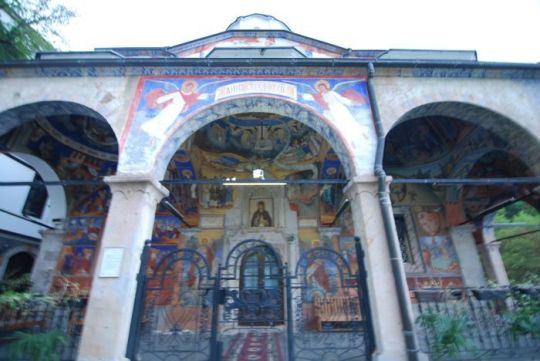
Arcadia Marina and the famous Pulcheria
He had the misfortune to quarrel with the ladies of the city, including the Empress, for their extravagance and looseness of manners. Ladies of fashion, for instance, saw nothing unbecoming in taking a swim in the public cisterns of the city. A sermon, preached while a statue of the Empress was being inaugurated close to the cathedral of S. Sophia, filled the cup of his offences. It may not be true that in the course of the discourse he compared the Empress to Herodias demanding the head of his namesake, John the Baptist.
But whatever the precise form of his words, he said enough to exasperate her to a degree that made her insist upon his final banishment, notwithstanding all the popular opposition to that step. By a strange fate, the pedestal of the column which bore the statue still remains, being now placed for safe keeping within the railing that encloses a narrow strip of ground on the northern side of the Church of S. Irene, in the first court of the Seraglio. A Latin inscription upon it records the erection of the monument in honour of Eudoxia, ever Augusta, by Simplicius, the Prefect of the city; while an inscription in Greek adds the information that the statue was of silver, the column of porphyry, and that the monument stood near the Senate-House.
Notwithstanding, however, the anxieties of the period, the improvement of the city continued to go forward. The splendour of the Court was increased by the erection of four princely mansions, placed respectively at the disposal of the Empress and her three daughters, Arcadia, Marina, and the famous Pulcheria. New Thermae were built, one of them, the Thermae Arcadianae, situated near the Sea of Marmora on the level tract below S. Irene, being a great ornament to the city.
A more abundant supply of water was secured by the construction of the large open reservoir, whose basin, 152 metres square, now occupied by vegetable gardens and houses, is still seen to the south-west of the Mosque of Sultan Selim, above the quarter of the Phanar. But the most notable addition to the equipment of the capital was a great forum placed upon the summit of the Xerolophus, the hill at the south-western corner of the city. It was commonly known as the Forum of Arcadius, but sometimes also as the Forum of Theodosius, on account, probably, of additions made to it by Theodosius II., the son and successor of Arcadius.
0 notes
Photo
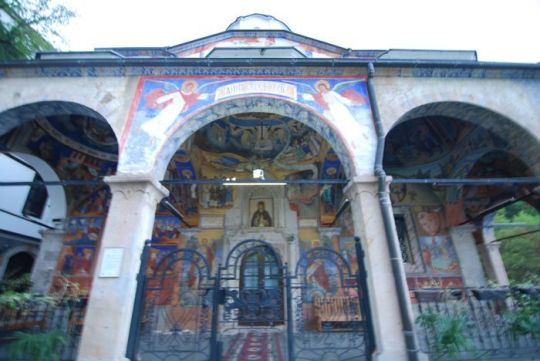
Arcadia Marina and the famous Pulcheria
He had the misfortune to quarrel with the ladies of the city, including the Empress, for their extravagance and looseness of manners. Ladies of fashion, for instance, saw nothing unbecoming in taking a swim in the public cisterns of the city. A sermon, preached while a statue of the Empress was being inaugurated close to the cathedral of S. Sophia, filled the cup of his offences. It may not be true that in the course of the discourse he compared the Empress to Herodias demanding the head of his namesake, John the Baptist.
But whatever the precise form of his words, he said enough to exasperate her to a degree that made her insist upon his final banishment, notwithstanding all the popular opposition to that step. By a strange fate, the pedestal of the column which bore the statue still remains, being now placed for safe keeping within the railing that encloses a narrow strip of ground on the northern side of the Church of S. Irene, in the first court of the Seraglio. A Latin inscription upon it records the erection of the monument in honour of Eudoxia, ever Augusta, by Simplicius, the Prefect of the city; while an inscription in Greek adds the information that the statue was of silver, the column of porphyry, and that the monument stood near the Senate-House.
Notwithstanding, however, the anxieties of the period, the improvement of the city continued to go forward. The splendour of the Court was increased by the erection of four princely mansions, placed respectively at the disposal of the Empress and her three daughters, Arcadia, Marina, and the famous Pulcheria. New Thermae were built, one of them, the Thermae Arcadianae, situated near the Sea of Marmora on the level tract below S. Irene, being a great ornament to the city.
A more abundant supply of water was secured by the construction of the large open reservoir, whose basin, 152 metres square, now occupied by vegetable gardens and houses, is still seen to the south-west of the Mosque of Sultan Selim, above the quarter of the Phanar. But the most notable addition to the equipment of the capital was a great forum placed upon the summit of the Xerolophus, the hill at the south-western corner of the city. It was commonly known as the Forum of Arcadius, but sometimes also as the Forum of Theodosius, on account, probably, of additions made to it by Theodosius II., the son and successor of Arcadius.
0 notes
Photo
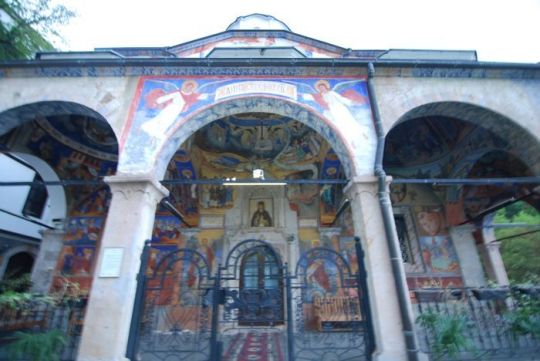
Arcadia Marina and the famous Pulcheria
He had the misfortune to quarrel with the ladies of the city, including the Empress, for their extravagance and looseness of manners. Ladies of fashion, for instance, saw nothing unbecoming in taking a swim in the public cisterns of the city. A sermon, preached while a statue of the Empress was being inaugurated close to the cathedral of S. Sophia, filled the cup of his offences. It may not be true that in the course of the discourse he compared the Empress to Herodias demanding the head of his namesake, John the Baptist.
But whatever the precise form of his words, he said enough to exasperate her to a degree that made her insist upon his final banishment, notwithstanding all the popular opposition to that step. By a strange fate, the pedestal of the column which bore the statue still remains, being now placed for safe keeping within the railing that encloses a narrow strip of ground on the northern side of the Church of S. Irene, in the first court of the Seraglio. A Latin inscription upon it records the erection of the monument in honour of Eudoxia, ever Augusta, by Simplicius, the Prefect of the city; while an inscription in Greek adds the information that the statue was of silver, the column of porphyry, and that the monument stood near the Senate-House.
Notwithstanding, however, the anxieties of the period, the improvement of the city continued to go forward. The splendour of the Court was increased by the erection of four princely mansions, placed respectively at the disposal of the Empress and her three daughters, Arcadia, Marina, and the famous Pulcheria. New Thermae were built, one of them, the Thermae Arcadianae, situated near the Sea of Marmora on the level tract below S. Irene, being a great ornament to the city.
A more abundant supply of water was secured by the construction of the large open reservoir, whose basin, 152 metres square, now occupied by vegetable gardens and houses, is still seen to the south-west of the Mosque of Sultan Selim, above the quarter of the Phanar. But the most notable addition to the equipment of the capital was a great forum placed upon the summit of the Xerolophus, the hill at the south-western corner of the city. It was commonly known as the Forum of Arcadius, but sometimes also as the Forum of Theodosius, on account, probably, of additions made to it by Theodosius II., the son and successor of Arcadius.
0 notes
Photo

Arcadia Marina and the famous Pulcheria
He had the misfortune to quarrel with the ladies of the city, including the Empress, for their extravagance and looseness of manners. Ladies of fashion, for instance, saw nothing unbecoming in taking a swim in the public cisterns of the city. A sermon, preached while a statue of the Empress was being inaugurated close to the cathedral of S. Sophia, filled the cup of his offences. It may not be true that in the course of the discourse he compared the Empress to Herodias demanding the head of his namesake, John the Baptist.
But whatever the precise form of his words, he said enough to exasperate her to a degree that made her insist upon his final banishment, notwithstanding all the popular opposition to that step. By a strange fate, the pedestal of the column which bore the statue still remains, being now placed for safe keeping within the railing that encloses a narrow strip of ground on the northern side of the Church of S. Irene, in the first court of the Seraglio. A Latin inscription upon it records the erection of the monument in honour of Eudoxia, ever Augusta, by Simplicius, the Prefect of the city; while an inscription in Greek adds the information that the statue was of silver, the column of porphyry, and that the monument stood near the Senate-House.
Notwithstanding, however, the anxieties of the period, the improvement of the city continued to go forward. The splendour of the Court was increased by the erection of four princely mansions, placed respectively at the disposal of the Empress and her three daughters, Arcadia, Marina, and the famous Pulcheria. New Thermae were built, one of them, the Thermae Arcadianae, situated near the Sea of Marmora on the level tract below S. Irene, being a great ornament to the city.
A more abundant supply of water was secured by the construction of the large open reservoir, whose basin, 152 metres square, now occupied by vegetable gardens and houses, is still seen to the south-west of the Mosque of Sultan Selim, above the quarter of the Phanar. But the most notable addition to the equipment of the capital was a great forum placed upon the summit of the Xerolophus, the hill at the south-western corner of the city. It was commonly known as the Forum of Arcadius, but sometimes also as the Forum of Theodosius, on account, probably, of additions made to it by Theodosius II., the son and successor of Arcadius.
0 notes
Photo

Arcadia Marina and the famous Pulcheria
He had the misfortune to quarrel with the ladies of the city, including the Empress, for their extravagance and looseness of manners. Ladies of fashion, for instance, saw nothing unbecoming in taking a swim in the public cisterns of the city. A sermon, preached while a statue of the Empress was being inaugurated close to the cathedral of S. Sophia, filled the cup of his offences. It may not be true that in the course of the discourse he compared the Empress to Herodias demanding the head of his namesake, John the Baptist.
But whatever the precise form of his words, he said enough to exasperate her to a degree that made her insist upon his final banishment, notwithstanding all the popular opposition to that step. By a strange fate, the pedestal of the column which bore the statue still remains, being now placed for safe keeping within the railing that encloses a narrow strip of ground on the northern side of the Church of S. Irene, in the first court of the Seraglio. A Latin inscription upon it records the erection of the monument in honour of Eudoxia, ever Augusta, by Simplicius, the Prefect of the city; while an inscription in Greek adds the information that the statue was of silver, the column of porphyry, and that the monument stood near the Senate-House.
Notwithstanding, however, the anxieties of the period, the improvement of the city continued to go forward. The splendour of the Court was increased by the erection of four princely mansions, placed respectively at the disposal of the Empress and her three daughters, Arcadia, Marina, and the famous Pulcheria. New Thermae were built, one of them, the Thermae Arcadianae, situated near the Sea of Marmora on the level tract below S. Irene, being a great ornament to the city.
A more abundant supply of water was secured by the construction of the large open reservoir, whose basin, 152 metres square, now occupied by vegetable gardens and houses, is still seen to the south-west of the Mosque of Sultan Selim, above the quarter of the Phanar. But the most notable addition to the equipment of the capital was a great forum placed upon the summit of the Xerolophus, the hill at the south-western corner of the city. It was commonly known as the Forum of Arcadius, but sometimes also as the Forum of Theodosius, on account, probably, of additions made to it by Theodosius II., the son and successor of Arcadius.
0 notes
Photo
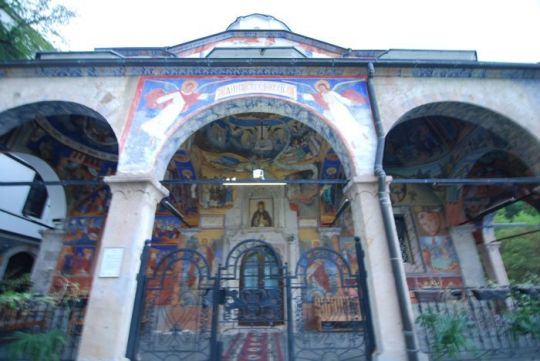
Arcadia Marina and the famous Pulcheria
He had the misfortune to quarrel with the ladies of the city, including the Empress, for their extravagance and looseness of manners. Ladies of fashion, for instance, saw nothing unbecoming in taking a swim in the public cisterns of the city. A sermon, preached while a statue of the Empress was being inaugurated close to the cathedral of S. Sophia, filled the cup of his offences. It may not be true that in the course of the discourse he compared the Empress to Herodias demanding the head of his namesake, John the Baptist.
But whatever the precise form of his words, he said enough to exasperate her to a degree that made her insist upon his final banishment, notwithstanding all the popular opposition to that step. By a strange fate, the pedestal of the column which bore the statue still remains, being now placed for safe keeping within the railing that encloses a narrow strip of ground on the northern side of the Church of S. Irene, in the first court of the Seraglio. A Latin inscription upon it records the erection of the monument in honour of Eudoxia, ever Augusta, by Simplicius, the Prefect of the city; while an inscription in Greek adds the information that the statue was of silver, the column of porphyry, and that the monument stood near the Senate-House.
Notwithstanding, however, the anxieties of the period, the improvement of the city continued to go forward. The splendour of the Court was increased by the erection of four princely mansions, placed respectively at the disposal of the Empress and her three daughters, Arcadia, Marina, and the famous Pulcheria. New Thermae were built, one of them, the Thermae Arcadianae, situated near the Sea of Marmora on the level tract below S. Irene, being a great ornament to the city.
A more abundant supply of water was secured by the construction of the large open reservoir, whose basin, 152 metres square, now occupied by vegetable gardens and houses, is still seen to the south-west of the Mosque of Sultan Selim, above the quarter of the Phanar. But the most notable addition to the equipment of the capital was a great forum placed upon the summit of the Xerolophus, the hill at the south-western corner of the city. It was commonly known as the Forum of Arcadius, but sometimes also as the Forum of Theodosius, on account, probably, of additions made to it by Theodosius II., the son and successor of Arcadius.
0 notes
Photo

Arcadia Marina and the famous Pulcheria
He had the misfortune to quarrel with the ladies of the city, including the Empress, for their extravagance and looseness of manners. Ladies of fashion, for instance, saw nothing unbecoming in taking a swim in the public cisterns of the city. A sermon, preached while a statue of the Empress was being inaugurated close to the cathedral of S. Sophia, filled the cup of his offences. It may not be true that in the course of the discourse he compared the Empress to Herodias demanding the head of his namesake, John the Baptist.
But whatever the precise form of his words, he said enough to exasperate her to a degree that made her insist upon his final banishment, notwithstanding all the popular opposition to that step. By a strange fate, the pedestal of the column which bore the statue still remains, being now placed for safe keeping within the railing that encloses a narrow strip of ground on the northern side of the Church of S. Irene, in the first court of the Seraglio. A Latin inscription upon it records the erection of the monument in honour of Eudoxia, ever Augusta, by Simplicius, the Prefect of the city; while an inscription in Greek adds the information that the statue was of silver, the column of porphyry, and that the monument stood near the Senate-House.
Notwithstanding, however, the anxieties of the period, the improvement of the city continued to go forward. The splendour of the Court was increased by the erection of four princely mansions, placed respectively at the disposal of the Empress and her three daughters, Arcadia, Marina, and the famous Pulcheria. New Thermae were built, one of them, the Thermae Arcadianae, situated near the Sea of Marmora on the level tract below S. Irene, being a great ornament to the city.
A more abundant supply of water was secured by the construction of the large open reservoir, whose basin, 152 metres square, now occupied by vegetable gardens and houses, is still seen to the south-west of the Mosque of Sultan Selim, above the quarter of the Phanar. But the most notable addition to the equipment of the capital was a great forum placed upon the summit of the Xerolophus, the hill at the south-western corner of the city. It was commonly known as the Forum of Arcadius, but sometimes also as the Forum of Theodosius, on account, probably, of additions made to it by Theodosius II., the son and successor of Arcadius.
0 notes
Photo

Arcadia Marina and the famous Pulcheria
He had the misfortune to quarrel with the ladies of the city, including the Empress, for their extravagance and looseness of manners. Ladies of fashion, for instance, saw nothing unbecoming in taking a swim in the public cisterns of the city. A sermon, preached while a statue of the Empress was being inaugurated close to the cathedral of S. Sophia, filled the cup of his offences. It may not be true that in the course of the discourse he compared the Empress to Herodias demanding the head of his namesake, John the Baptist.
But whatever the precise form of his words, he said enough to exasperate her to a degree that made her insist upon his final banishment, notwithstanding all the popular opposition to that step. By a strange fate, the pedestal of the column which bore the statue still remains, being now placed for safe keeping within the railing that encloses a narrow strip of ground on the northern side of the Church of S. Irene, in the first court of the Seraglio. A Latin inscription upon it records the erection of the monument in honour of Eudoxia, ever Augusta, by Simplicius, the Prefect of the city; while an inscription in Greek adds the information that the statue was of silver, the column of porphyry, and that the monument stood near the Senate-House.
Notwithstanding, however, the anxieties of the period, the improvement of the city continued to go forward. The splendour of the Court was increased by the erection of four princely mansions, placed respectively at the disposal of the Empress and her three daughters, Arcadia, Marina, and the famous Pulcheria. New Thermae were built, one of them, the Thermae Arcadianae, situated near the Sea of Marmora on the level tract below S. Irene, being a great ornament to the city.
A more abundant supply of water was secured by the construction of the large open reservoir, whose basin, 152 metres square, now occupied by vegetable gardens and houses, is still seen to the south-west of the Mosque of Sultan Selim, above the quarter of the Phanar. But the most notable addition to the equipment of the capital was a great forum placed upon the summit of the Xerolophus, the hill at the south-western corner of the city. It was commonly known as the Forum of Arcadius, but sometimes also as the Forum of Theodosius, on account, probably, of additions made to it by Theodosius II., the son and successor of Arcadius.
0 notes
Photo

Arcadia Marina and the famous Pulcheria
He had the misfortune to quarrel with the ladies of the city, including the Empress, for their extravagance and looseness of manners. Ladies of fashion, for instance, saw nothing unbecoming in taking a swim in the public cisterns of the city. A sermon, preached while a statue of the Empress was being inaugurated close to the cathedral of S. Sophia, filled the cup of his offences. It may not be true that in the course of the discourse he compared the Empress to Herodias demanding the head of his namesake, John the Baptist.
But whatever the precise form of his words, he said enough to exasperate her to a degree that made her insist upon his final banishment, notwithstanding all the popular opposition to that step. By a strange fate, the pedestal of the column which bore the statue still remains, being now placed for safe keeping within the railing that encloses a narrow strip of ground on the northern side of the Church of S. Irene, in the first court of the Seraglio. A Latin inscription upon it records the erection of the monument in honour of Eudoxia, ever Augusta, by Simplicius, the Prefect of the city; while an inscription in Greek adds the information that the statue was of silver, the column of porphyry, and that the monument stood near the Senate-House.
Notwithstanding, however, the anxieties of the period, the improvement of the city continued to go forward. The splendour of the Court was increased by the erection of four princely mansions, placed respectively at the disposal of the Empress and her three daughters, Arcadia, Marina, and the famous Pulcheria. New Thermae were built, one of them, the Thermae Arcadianae, situated near the Sea of Marmora on the level tract below S. Irene, being a great ornament to the city.
A more abundant supply of water was secured by the construction of the large open reservoir, whose basin, 152 metres square, now occupied by vegetable gardens and houses, is still seen to the south-west of the Mosque of Sultan Selim, above the quarter of the Phanar. But the most notable addition to the equipment of the capital was a great forum placed upon the summit of the Xerolophus, the hill at the south-western corner of the city. It was commonly known as the Forum of Arcadius, but sometimes also as the Forum of Theodosius, on account, probably, of additions made to it by Theodosius II., the son and successor of Arcadius.
0 notes
Photo
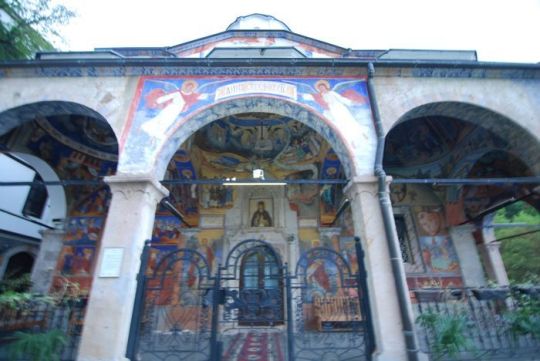
Arcadia Marina and the famous Pulcheria
He had the misfortune to quarrel with the ladies of the city, including the Empress, for their extravagance and looseness of manners. Ladies of fashion, for instance, saw nothing unbecoming in taking a swim in the public cisterns of the city. A sermon, preached while a statue of the Empress was being inaugurated close to the cathedral of S. Sophia, filled the cup of his offences. It may not be true that in the course of the discourse he compared the Empress to Herodias demanding the head of his namesake, John the Baptist.
But whatever the precise form of his words, he said enough to exasperate her to a degree that made her insist upon his final banishment, notwithstanding all the popular opposition to that step. By a strange fate, the pedestal of the column which bore the statue still remains, being now placed for safe keeping within the railing that encloses a narrow strip of ground on the northern side of the Church of S. Irene, in the first court of the Seraglio. A Latin inscription upon it records the erection of the monument in honour of Eudoxia, ever Augusta, by Simplicius, the Prefect of the city; while an inscription in Greek adds the information that the statue was of silver, the column of porphyry, and that the monument stood near the Senate-House.
Notwithstanding, however, the anxieties of the period, the improvement of the city continued to go forward. The splendour of the Court was increased by the erection of four princely mansions, placed respectively at the disposal of the Empress and her three daughters, Arcadia, Marina, and the famous Pulcheria. New Thermae were built, one of them, the Thermae Arcadianae, situated near the Sea of Marmora on the level tract below S. Irene, being a great ornament to the city.
A more abundant supply of water was secured by the construction of the large open reservoir, whose basin, 152 metres square, now occupied by vegetable gardens and houses, is still seen to the south-west of the Mosque of Sultan Selim, above the quarter of the Phanar. But the most notable addition to the equipment of the capital was a great forum placed upon the summit of the Xerolophus, the hill at the south-western corner of the city. It was commonly known as the Forum of Arcadius, but sometimes also as the Forum of Theodosius, on account, probably, of additions made to it by Theodosius II., the son and successor of Arcadius.
0 notes
Photo
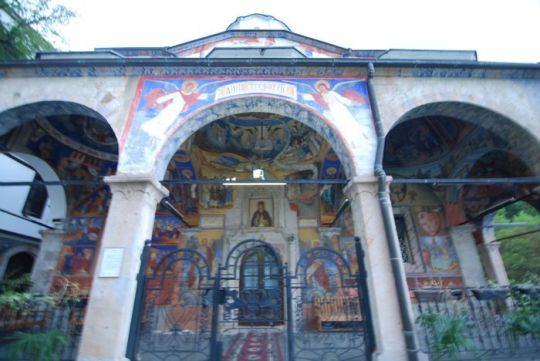
Arcadia Marina and the famous Pulcheria
He had the misfortune to quarrel with the ladies of the city, including the Empress, for their extravagance and looseness of manners. Ladies of fashion, for instance, saw nothing unbecoming in taking a swim in the public cisterns of the city. A sermon, preached while a statue of the Empress was being inaugurated close to the cathedral of S. Sophia, filled the cup of his offences. It may not be true that in the course of the discourse he compared the Empress to Herodias demanding the head of his namesake, John the Baptist.
But whatever the precise form of his words, he said enough to exasperate her to a degree that made her insist upon his final banishment, notwithstanding all the popular opposition to that step. By a strange fate, the pedestal of the column which bore the statue still remains, being now placed for safe keeping within the railing that encloses a narrow strip of ground on the northern side of the Church of S. Irene, in the first court of the Seraglio. A Latin inscription upon it records the erection of the monument in honour of Eudoxia, ever Augusta, by Simplicius, the Prefect of the city; while an inscription in Greek adds the information that the statue was of silver, the column of porphyry, and that the monument stood near the Senate-House.
Notwithstanding, however, the anxieties of the period, the improvement of the city continued to go forward. The splendour of the Court was increased by the erection of four princely mansions, placed respectively at the disposal of the Empress and her three daughters, Arcadia, Marina, and the famous Pulcheria. New Thermae were built, one of them, the Thermae Arcadianae, situated near the Sea of Marmora on the level tract below S. Irene, being a great ornament to the city.
A more abundant supply of water was secured by the construction of the large open reservoir, whose basin, 152 metres square, now occupied by vegetable gardens and houses, is still seen to the south-west of the Mosque of Sultan Selim, above the quarter of the Phanar. But the most notable addition to the equipment of the capital was a great forum placed upon the summit of the Xerolophus, the hill at the south-western corner of the city. It was commonly known as the Forum of Arcadius, but sometimes also as the Forum of Theodosius, on account, probably, of additions made to it by Theodosius II., the son and successor of Arcadius.
0 notes
Photo
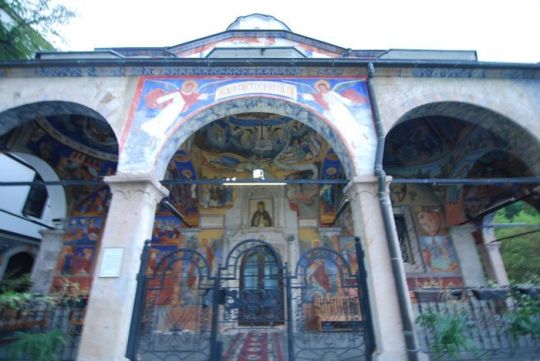
Arcadia Marina and the famous Pulcheria
He had the misfortune to quarrel with the ladies of the city, including the Empress, for their extravagance and looseness of manners. Ladies of fashion, for instance, saw nothing unbecoming in taking a swim in the public cisterns of the city. A sermon, preached while a statue of the Empress was being inaugurated close to the cathedral of S. Sophia, filled the cup of his offences. It may not be true that in the course of the discourse he compared the Empress to Herodias demanding the head of his namesake, John the Baptist.
But whatever the precise form of his words, he said enough to exasperate her to a degree that made her insist upon his final banishment, notwithstanding all the popular opposition to that step. By a strange fate, the pedestal of the column which bore the statue still remains, being now placed for safe keeping within the railing that encloses a narrow strip of ground on the northern side of the Church of S. Irene, in the first court of the Seraglio. A Latin inscription upon it records the erection of the monument in honour of Eudoxia, ever Augusta, by Simplicius, the Prefect of the city; while an inscription in Greek adds the information that the statue was of silver, the column of porphyry, and that the monument stood near the Senate-House.
Notwithstanding, however, the anxieties of the period, the improvement of the city continued to go forward. The splendour of the Court was increased by the erection of four princely mansions, placed respectively at the disposal of the Empress and her three daughters, Arcadia, Marina, and the famous Pulcheria. New Thermae were built, one of them, the Thermae Arcadianae, situated near the Sea of Marmora on the level tract below S. Irene, being a great ornament to the city.
A more abundant supply of water was secured by the construction of the large open reservoir, whose basin, 152 metres square, now occupied by vegetable gardens and houses, is still seen to the south-west of the Mosque of Sultan Selim, above the quarter of the Phanar. But the most notable addition to the equipment of the capital was a great forum placed upon the summit of the Xerolophus, the hill at the south-western corner of the city. It was commonly known as the Forum of Arcadius, but sometimes also as the Forum of Theodosius, on account, probably, of additions made to it by Theodosius II., the son and successor of Arcadius.
0 notes
Photo
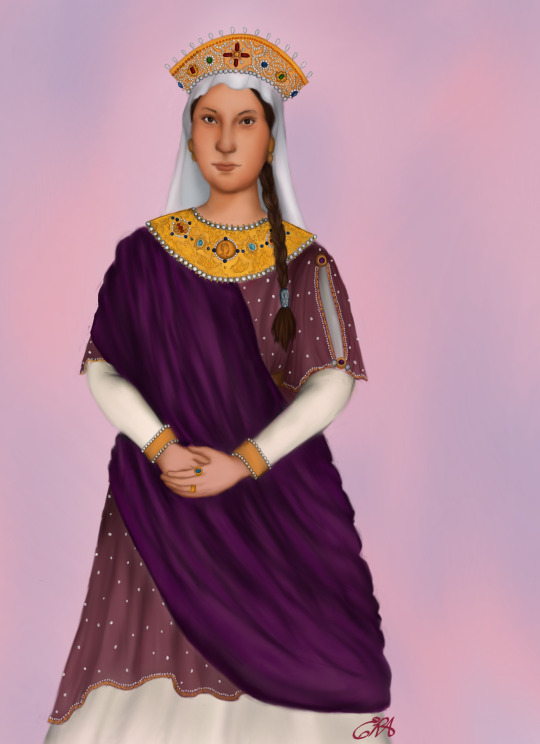
Victims of the Childbed - Aelia Eudoxia
Eudoxia was born between 377 and 380. Her father was a Romanized Frank called Flavius Bauto, her mother is unknown but was probably Roman. Because of her father’s Frankish origin Eudoxia was called a “semibarbara” or “half-Barbarian.” Bauto was a military leader and was a consul of the Western Roman Empire in 385, but was dead by 388, probably leaving Eudoxia an orphan. Eudoxia became the Byzantine Empress through a kind of intrigue-filled Cinderella story. Upon the death of Emperor Theodosius I he was succeeded by his son Arcadius. Just three months later Arcadius married Eudoxia in a wedding orchestrated by one political faction to undermine the power of another. Within two years of her marriage Eudoxia fulfilled her main duty as Empress and began producing children. This was important as it strengthened her standing at court. Though she did not seem directly involved in politics she did appear on coinage and a silver statue of her was erected in Constantinople. In 399 Arcadius had Eudoxia declared an Augusta. This was unusual, as at that point Eudoxia had borne two daughters (and was pregnant with a third) but no male heir. As an Augusta, Eudoxia acted more independently and became very involved in ecclesiastic affairs.
Eudoxia was a patron of the church faction favoring the Nicene Creed. She likely funded anti-Arian processions in Constantinople. Eudoxia was also keenly aware of her own public image. During the celebrations surrounding the arrival of a martyr’s remains in the city, Eudoxia took center stage and persuaded Arcadius not to attend so that he would not intrude on her role as main benefactor. Perhaps the most famous event of Eudoxia’s life was her conflict of John Chrysostom, Patriarch of Constantinople. John denounced Eudoxia as a Jezebel. He also railed against the extravagance of women, which was a thinly veiled jab at Eudoxia and her imperial finery. In retaliation for his attacks and for the threat she believed he posed to the church, Eudoxia allied herself with Patriarch Theophilus of Alexandria. She was involved in the Synod of Oak, at which John was condemned and deposed. But John was soon reinstated due to public unrest. After his reinstatement, John attacked Eudoxia again by comparing her to Herodius:“Again Herodias raves; again she is troubled; she dances again; and again she desires to receive John’s head in a charger.” He alluded to the story of the beheading of John the Baptist, with himself in the place of the biblical John. Yet again Eudoxia had him banished for a final time.
In Eudoxia’s nine years as Empress, she gave birth to four daughters- Flacillia, Pulcheria, Arcadia, and Marina- and a son, the future Theodosius II. She had two pregnancies in 403 and 404 that did not result in living infants. Her pregnancy in 404 ended in a possible stillbirth. This left Eudoxia weakened by hemorrhaging and she soon developed an infection. Eudoxia died on October 6, 404, a sudden demise for a powerful and tenacious woman. Her involvement in the church and influence with her husband set a social and religious example for future Byzantine empresses.
#denouncing a powerful woman as a Jezebel?#groundbreaking#the thing about this project is having to realize how many promising lives were cut short#I need a drink#Aelia Eudoxia#Empress Eudoxia#Byzantine#5th century#victims of the childbed#art#my art
128 notes
·
View notes